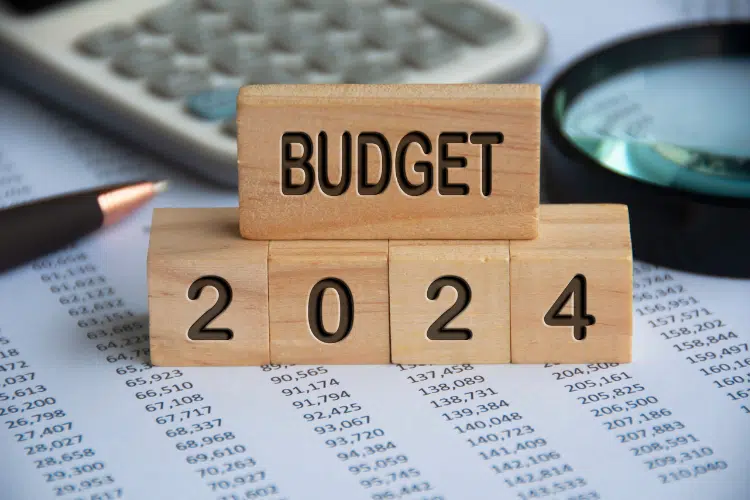Accurate business valuations are crucial for companies of all sizes, from budding start-ups to well-established enterprises. Whether you’re planning to sell your business, raise capital, engage in a merger or acquisition, or undertake succession planning, understanding your business’s true value is vital. In this guide, we’ll outline what a business valuation is, why it’s important to have an accurate one, and the various methods you can use to calculate it.
What is a Business Valuation?
In simple terms, a business valuation determines the monetary worth of a business. It considers various characteristics such as asset inventory and cash flow to establish its true value. Often, a combination of valuation methods is used to provide a comprehensive assessment.
A business valuation can be required under several circumstances, such as when contemplating selling your business, seeking to raise capital, engaging in mergers or acquisitions, or planning for succession. Each scenario requires a thorough and accurate valuation to ensure informed decision-making and strategic planning.
Why Business Valuation is Important
A business valuation is essential for several reasons:
- Raising Investment: When seeking investment, an accurate business valuation helps attract investors by providing a clear and transparent view of your business’s market worth. This is especially important for venture capital schemes and SEIS investments, which offer tax reliefs to investors in qualifying trades.
- Selling Your Business: An accurate valuation ensures that you set a fair selling price for your business. It helps in negotiating efficiently with prospective buyers and securing the best possible deal.
- Mergers and Acquisitions: In mergers or acquisitions, knowing the precise value of your business is crucial for structuring deals and negotiating terms that are favorable to all parties involved.
- Succession Planning: A business valuation helps in succession planning by providing a clear picture of the company’s worth. It ensures that the transition is smooth and that the business continues to thrive under new leadership.
- Financial Health: Regular business valuations act as a health check-up for your business, highlighting strengths and weaknesses. It enables you to make strategic decisions to enhance the financial health and long-term sustainability of your business.
Methods to Calculate Business Valuation
There are various methods to calculate business valuation, each with its own strengths and weaknesses. Often, a combination of these methods is used to arrive at a more comprehensive and accurate valuation. Here are eight commonly used business valuation methods:
1. Entry Valuation
The Entry Valuation Framework determines the value of a business by calculating the cost of creating a similar venture from scratch. In simple terms, it answers the question: “How much would it cost to start my business today if it didn’t already exist?”
To get a precise estimate, start by itemizing all the potential start-up costs, such as acquiring tangible assets, hiring and training employees, establishing a customer base, and developing products and services. Once you’ve compiled this list, consider areas where you could cut costs if you were starting again. By subtracting these potential savings from your projected start-up costs, you can determine the entry valuation cost.
2. Discounted Cash Flow (DCF)
The Discounted Cash Flow (DCF) method is a sophisticated approach to business valuation that focuses on determining the present value of future cash flows. This method calculates what a future cash flow stream would be worth today and therefore figures out how much a company might be worth in the future.
To calculate the present value of future cash flows, you apply a discount interest rate to account for any risk factors and the time value of money. The concept of the time value of money suggests that £1 earned today holds more value than £1 earned tomorrow due to its potential to earn returns. This valuation technique is commonly employed when seeking investors, such as venture capitalists and angel investors, as it helps them predict whether a business can generate a return on their investment within their desired timeframe.
3. Asset Valuation
If your business possesses substantial assets, conducting an asset valuation can provide a comprehensive understanding of your business’s overall value. Assets can be categorised into two types: tangible and intangible. Tangible assets are physical items owned by your business, such as office space, inventory, land, and equipment. Intangible assets include non-physical properties, such as your business’s brand, reputation, and intellectual property like copyrights and patents.
The Net Book Value (NBV) of your business is calculated by deducting the costs of your business liabilities, including debt and outstanding credit, from the total value of your tangible and intangible assets.
4. Times Revenue Method
The Times Revenue Method is commonly used when valuing new or early-stage companies that lack sufficient earnings history to utilise other valuation models. This model calculates the revenue of a business, typically over a year, and multiplies it by an industry-specific multiplier.
5. Price to Earnings (P/E) Ratio
The Price to Earnings (P/E) Ratio valuation method evaluates a company’s stock price in relation to the profit an investor can anticipate from it. This is often calculated using an average of share prices and earnings over the previous twelve months. Your P/E ratio can then be compared to other businesses within your industry to determine if it falls below, meets, or exceeds the industry average.
6. Comparable Analysis
The Comparable Analysis method is a simple yet effective approach to valuing your business. It involves estimating the worth of your business by comparing it to similar businesses in your industry. This method provides an observable value for your business based on the current market value of comparable companies.
7. Industry Best-Practice
In certain industries, business purchases and mergers happen frequently, such as in the retail sector. In these sectors, indicators such as business turnover, customer volume, and number of outlets provide insights into the true value of a business and can be used as a useful reference point for valuing similar businesses.
8. Precedent Transaction Method
Like Comparable Analysis, the Precedent Transaction Method uses the assessment of similar businesses in your industry as a benchmark for business value. In this approach, you examine companies within your industry that have recently been sold or acquired.
How BSO-Fintax Can Help
At BSO-Fintax, we offer expert business valuation services to help you understand your company’s worth. Our experienced professionals use a combination of valuation methods tailored to your specific needs, ensuring accuracy and reliability. Whether you’re planning to sell, raise capital, or make strategic decisions, our comprehensive valuation services provide the insights you need.
Our services include:
- Detailed Analysis: We conduct a thorough analysis of your business, considering various factors that impact its value.
- Comprehensive Reporting: We provide detailed reports that offer a clear understanding of your business’s financial health and market value.
- Strategic Advice: Our experts offer strategic advice based on the valuation results, helping you make informed decisions.
- Ongoing Support: We offer ongoing support to ensure that your business remains on the right track and continues to grow in value.
Contact BSO-Fintax today to learn more about our business valuation services and how we can help you achieve your business goals with confidence.




